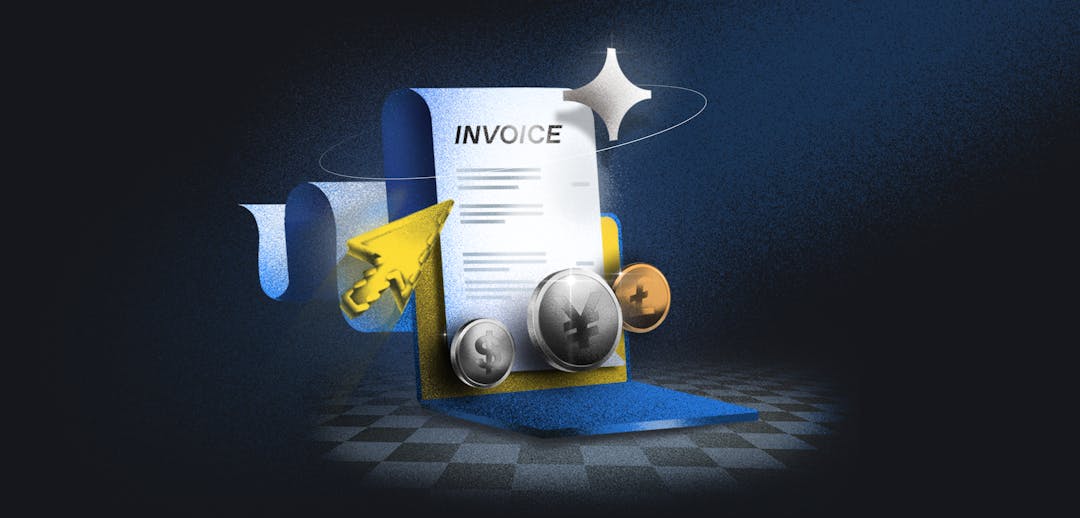Finance teams everywhere will know that reconciliation is not a commonly favorite task on the to-do list. The reasons why? Well, we’re about to tell you.
But first, let’s start with the basics.
The importance of invoice reconciliation
Invoice reconciliation is the process of matching information on bank statements to the invoices that you have going out and coming in.
There are two main reasons why it is so important to your business. With proper invoice reconciliation, you are:
1) Ensuring accurate financial records
Both accounts receivable and accounts payable buckets require prompt reconciliation to maintain the accuracy of your financial records. What does that mean? Your reporting needs to be reliable and up-to-date, that’s what.
But the thing is, invoice reconciliation (and ticking these two boxes) isn’t always - or rarely is - that simple. More on that below. 👀
2) Knowing who’s paid and who hasn’t
The process of collections and delinquency is all about keeping on top of who has paid and who hasn’t, giving both your success and account management teams clarity on the payment status of a customer. One thing you have to be careful of is unnecessarily chasing buyers for unpaid invoices when they’ve already paid.
The challenges of reconciliation
Finance teams across the globe can experience headaches with reconciliation as they scale. Here are some of the common challenges they can face along the way:
1) Dealing with inaccurate records
In an ideal world, all your numbers would match up nicely every time. In the real world, it’s not quite like this.
Let’s take a look at some of the main reasons why invoices and payment data mismatch:
- Discounts, vouchers, or one-time offers given to customers
- Bank charges (eg. currency exchanges, international payment fees, etc)
- Remaining balance agreed to be paid at a later date
- Invoice or expense note missing in the system
- Buyer error/mistake in the payment amount
With the potential of all the above occurring for any of your payments coming in, that means a whole lot of extra checks for your finance team – or the implementation of tools to help automate this process.
2) Taking on manual processes
Here’s the thing: manual processes are both time-consuming and subject to human error - two things you definitely don’t need when you’ve got a business to grow.
You also run into further problems, including inaccurate reporting due to time delays between the payment made and the payment reconciled. This means your accounts payable and accounts receivable buckets aren’t guaranteed to be up-to-date or real-time, especially if you’re near the start or end of an accounting period - which isn’t great for satisfying stakeholders, like board members or current (or prospective) investors.
3) It’s not cost-effective
The more manual - and therefore, time-consuming - processes there are, the more of your team’s time is being taken up. These financial operations cost - and you didn’t hire your team to have their heads stuck in spreadsheets and invoices the entire time, did you?
The costs of salaries, human error, and all the necessary tools quickly rack up, and these repetitive tasks aren’t necessarily a productive use of your team’s time - not if you’re really thinking about your business growth plans. Getting rid of these types of tasks would give your team the chance to be more strategic in their roles. 👀
4) There’s no single source of truth
Selling globally, like most SaaS businesses are, means you’ve got a lot of data coming in from multiple sources. You’ve got different bank accounts, payment methods, payment gateways, currencies, geographies with the potential for multiple entities, as well as different conversion fees, FX fees, and sales tax regulations on top.
But what does all this split data mean for your invoice reconciliation? You guessed it: it’s another headache for your finance team.
Split data quickly complicates reporting and important processes like invoicing, which is why ‘single source of truth’ is such a hot topic. By making sure your data collection is unified and as accurate as possible saves the headache of calculations (and recalculations when things don’t quite add up) and spares your finance team a lot of time.
The ideal scenario for your finance team
So, how can you make your finance teams’ lives easier in the reconciliation process?
In short (and we might have hinted at it already): automation and accuracy.
With an automated process in place - like using a merchant of record, for example - you can hand over the whole reconciliation process, and not worry about any of the above headaches or challenges.
You’ll find a bunch of platforms out there that can support the automation of your invoice reconciliation, but here’s a secret: you can go one step further than that.
With Paddle, we don’t automate it - we actually do it for you. That means we cover all possible challenges, including issues with inaccurate records, manual processes, and split data, all within our unified platform. We take away the responsibility of reconciliation, but leave you with total visibility over every single transaction.





